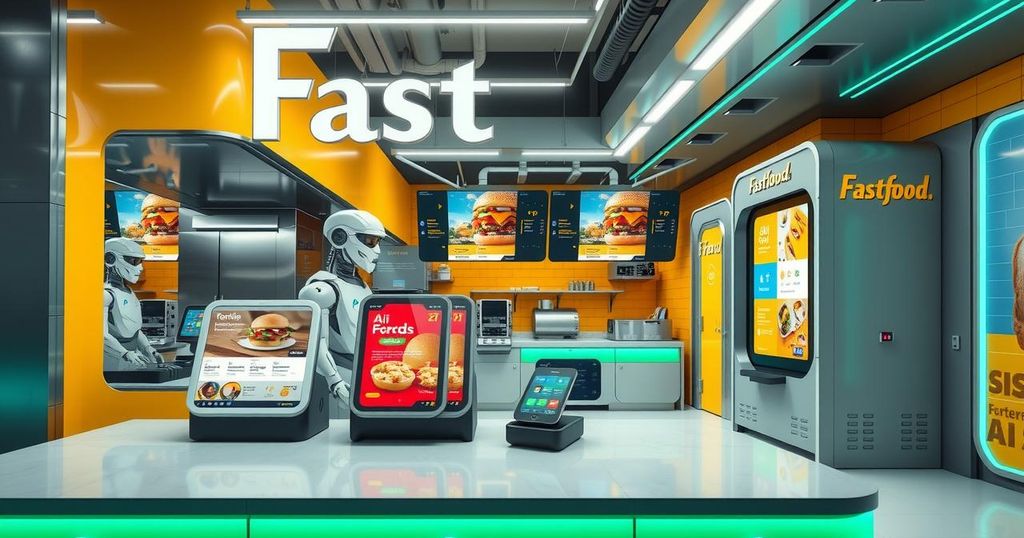AI Revolution in Fast Food: Balancing Efficiency with Security Challenges
Fast food chains like McDonald’s and Yum! Brands are adopting AI to enhance efficiency but face significant cybersecurity challenges. Issues include multiple interfaces, sensitive data access, and environmental vibrancies affecting voice ordering systems. Security must be prioritized as companies embrace this frontier technology in a rapidly evolving landscape.
The fast food industry is on the brink of a technological revolution, with major chains like McDonald’s and Yum! Brands leading the charge in adopting artificial intelligence (AI). McDonald’s plans a comprehensive AI overhaul, while Yum! partners with Nvidia to enhance its services through machine learning technologies. Even Chick-fil-A has embraced smart cameras and drone footage to streamline its operations.
AI promises significantly improved efficiencies across the fast food realm. With over 100,000 locations global, these chains aim to tackle repetitive tasks, enhance drive-through efficiency with voice-automation, and activate sensor-tagged kitchen equipment to foresee maintenance needs. Brian Rice, McDonald’s Chief Information Officer, emphasized, “That’s a lot to deal with for our crew.”
Nevertheless, AI integration in fast food introduces complex challenges, especially in security. Multiple customer interaction points—counters, drive-throughs, and various digital platforms—must all harmonize with new technology, requiring careful planning to prevent vulnerabilities. The rapid pace of AI development raises alarm regarding potential breaches, thus highlighting the need for robust cybersecurity measures.
Moreover, while using AI for staffing tasks like scheduling might seem efficient, it opens doors to new security vulnerabilities. An AI-driven system needs access to sensitive information, increasing risk of accidental or malicious breaches. Any transfer of responsibility—from human to AI—must be approached with caution to avoid unintentional oversights in operational processes.
In addition to security, voice-ordering systems face their own unique vulnerabilities. Threats like a digital order imitating a human’s voice could lead to widespread issues, alongside environmental factors affecting system performance. Fluctuating noise from traffic or nearby areas can distort AI systems, resulting in costly mistakes.
Computer vision technology, while beneficial for operations, also raises privacy concerns and adds complexity to IT systems across franchise networks. Variability in franchisee technical capabilities means a holistic approach to AI deployment is difficult to achieve. Each location must not only adopt hardware capable of supporting AI but also maintain fail-safe measures.
AI systems require extensive training and constant testing against potential threats to guarantee security and efficiency, a demanding and ongoing process. For restaurants, a proactive defense strategy to address inherent risks posed by AI is essential, given the speed at which their adversaries can adapt.
The fast food sector’s rush to integrate artificial intelligence symbolizes a transitional phase, balancing efficiency and security. While businesses capitalize on AI’s potential efficiencies, there is an urgent need for rigorous cybersecurity measures. By acknowledging the risks and planning for resilient AI systems, the industry can navigate the challenges that come with technological advancements and customer expectations.
Original Source: modernrestaurantmanagement.com




Post Comment